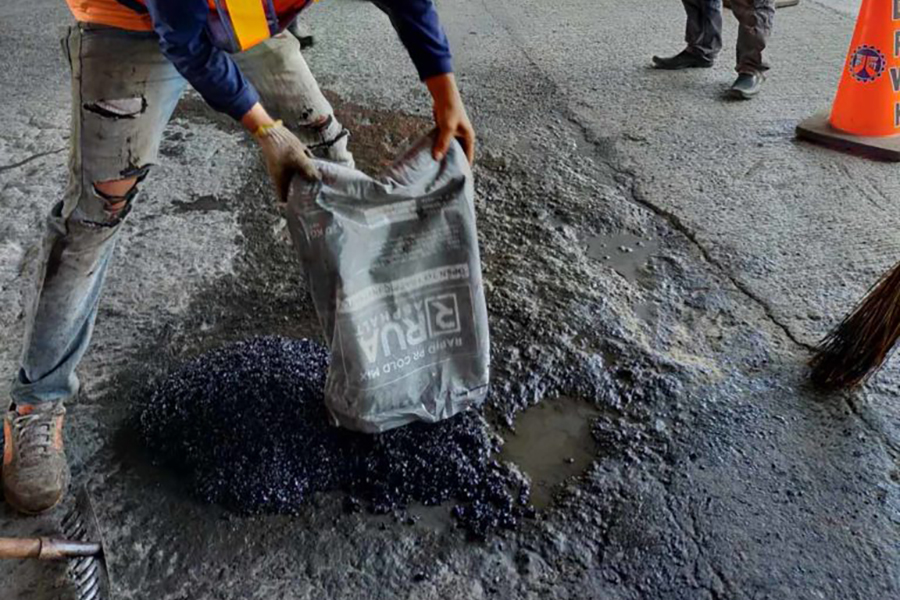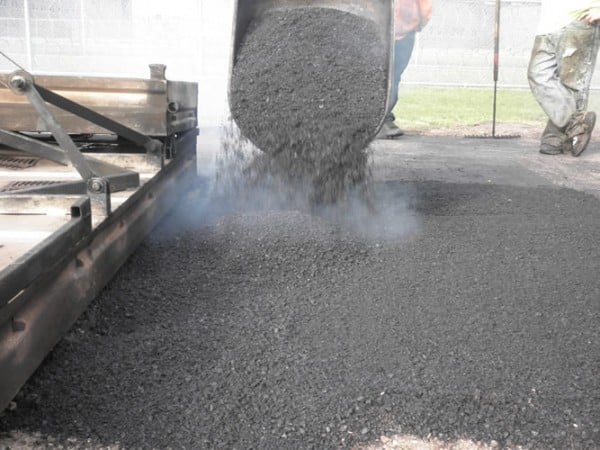Hot Mix Asphalt: The Structure for Safe and Secure Angled Parking Lots
Hot Mix Asphalt: The Structure for Safe and Secure Angled Parking Lots
Blog Article
Unlocking the Secrets of Hot Mix Asphalt Innovation
Checking out the midsts of warm mix asphalt innovation uncovers a world where exact solutions and thorough procedures converge to shape our roadways and framework. The fusion of fillers, binders, and accumulations isn't just a building and construction job yet a strategic orchestration of sturdiness and effectiveness. As we peer into the elaborate dancing of elements, a tapestry of strength and sustainability unravels. What exists underneath this surface of asphaltic mastery, and what secrets wait to be introduced in the world of paving innovations?
Significance of Hot Mix Asphalt
Warm Mix Asphalt plays a critical role in modern framework growth because of its sturdiness and cost-effectiveness. As the most frequently used leading material for roadways, highways, and parking area, Warm Mix Asphalt provides a series of benefits that add to its importance in building projects. One crucial benefit is its capability to stand up to heavy web traffic tons and severe weather, giving a dependable and resilient surface area for transportation networks. Furthermore, Warm Mix Asphalt is cost-efficient in both initial building and lasting upkeep, making it a preferred choice for lots of framework tasks.
The longevity of Warm Mix Asphalt stems from its structure, which includes aggregates, binder, and filler products that are meticulously picked and mixed to meet specific efficiency demands. In general, the importance of Warm Mix Asphalt in facilities development can not be underrated, as it proceeds to be a foundation of contemporary construction techniques.
Parts of Asphalt Mixes
The composition of asphalt blends contains carefully picked aggregates, binder, and filler products that are vital for accomplishing specific efficiency requirements. Accumulations are the main part of asphalt blends, providing toughness and security. These aggregates can be all-natural, such as gravel or crushed stone, or artificial, like recycled products from old pavements. The binder, typically asphalt or asphalt concrete, holds the aggregates with each other and provides versatility and longevity to the mix. The choice of the binder is critical as it directly affects the mix's efficiency in different weather condition problems. Fillers, such as moisturized lime or Rose city cement, are utilized to improve the mix's workability and aging resistance. Angled Parking.
The combination and proportion of these components play a considerable function in establishing the top quality and efficiency of the asphalt mix. Designers carefully design the mix to meet particular demands, thinking about aspects like website traffic quantity, environment problems, and sidewalk life expectancy. Appropriate choice and balancing of aggregates, binder, and fillers are necessary for producing long lasting, durable asphalt sidewalks.
Mixing and Production Techniques

As soon as the aggregates are selected, the binder, frequently asphalt cement, is Full Article contributed to bind the materials together. The binder's high quality and amount dramatically influence the mix's flexibility, resistance, and strength to ecological variables. In addition, fillers like moisturized lime or Rose city concrete might be integrated to improve particular attributes of the asphalt mix, such as its workability or wetness resistance.
During production, the accumulations and binder are warmed, typically in between 250-325 ° F(121-163 ° C ), to promote blending and guarantee proper covering of the aggregates. The blending procedure should be extensive to achieve a homogeneous mixture that promotes the wanted efficiency attributes of the asphalt. Different strategies, such as batch mixing or drum mixing, are employed to achieve high-quality and consistent asphalt mixes for construction projects.
Factors Influencing Asphalt Performance
Aspects influencing asphalt performance incorporate a range of variables that affect the durability, durability, and total quality of asphalt pavements. One crucial variable is the quality of materials made use of in the asphalt mix.

Layout factors to consider, such as sidewalk density and drain, are crucial in making certain the long-term efficiency of the asphalt sidewalk. By very carefully thinking about these professionals, aspects and engineers you could try this out can optimize asphalt efficiency and improve the service life of sidewalks.
Sustainable Practices in Asphalt Innovation

WMA allows for the manufacturing and positioning of asphalt mixes at reduced temperatures contrasted to traditional hot-mix asphalt, resulting in minimized energy usage and greenhouse gas exhausts. The use of permeable asphalt mixes can assist mitigate stormwater overflow concerns by allowing water to infiltrate via the pavement and into the ground, advertising all-natural water filtering and reenergize procedures.
Final Thought
Finally, hot mix asphalt innovation plays a crucial role in modern facilities advancement as a result of its durability and cost-effectiveness. By very carefully stabilizing parts, using correct blending strategies, and considering various factors, engineers can create top quality asphalt mixes that endure heavy web traffic tons and severe weather. Accepting sustainable practices, such as using warm-mix technologies like it and recycled products, even more improves the environmental kindness of asphalt technology.
Blending and manufacturing methods in hot mix asphalt technology entail the specific mix and processing of accumulations, binder, and fillers to develop a long lasting and high-performance asphalt mix.Elements affecting asphalt efficiency include a range of variables that influence the toughness, durability, and overall top quality of asphalt pavements. Sustainable techniques in asphalt innovation encompass numerous efforts intended at minimizing the environmental influence of asphalt production and paving procedures. By integrating reclaimed asphalt sidewalk (RAP) and recycled asphalt shingles (RAS) right into new asphalt blends, the market can significantly minimize the consumption of raw products and energy, while additionally decreasing land fill waste.
WMA allows for the manufacturing and placement of asphalt blends at lower temperature levels contrasted to standard hot-mix asphalt, resulting in reduced energy intake and greenhouse gas discharges.
Report this page